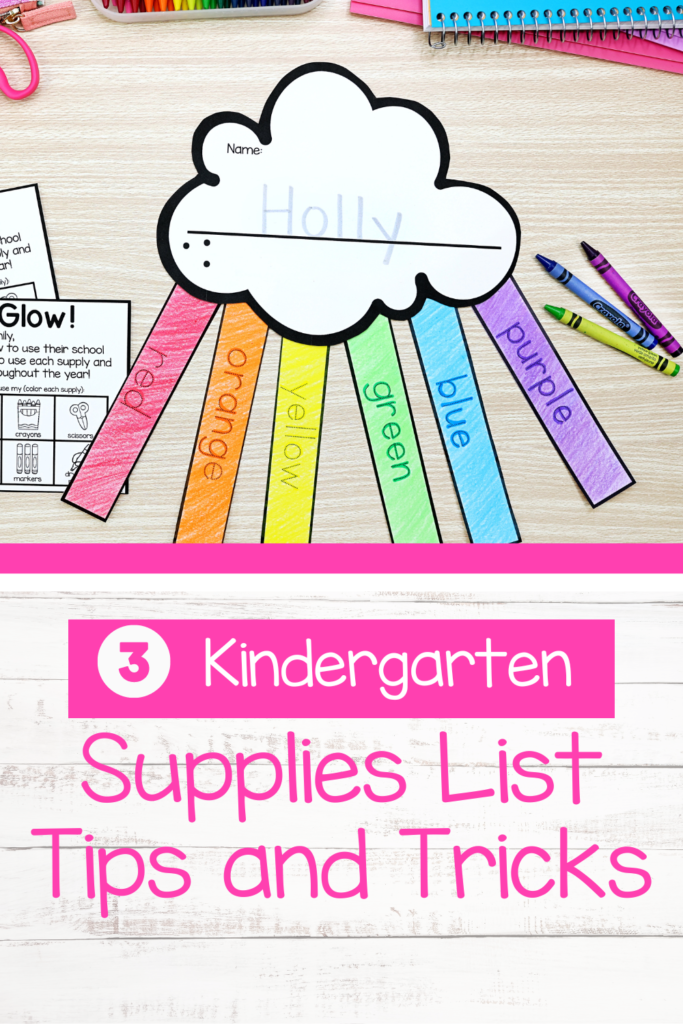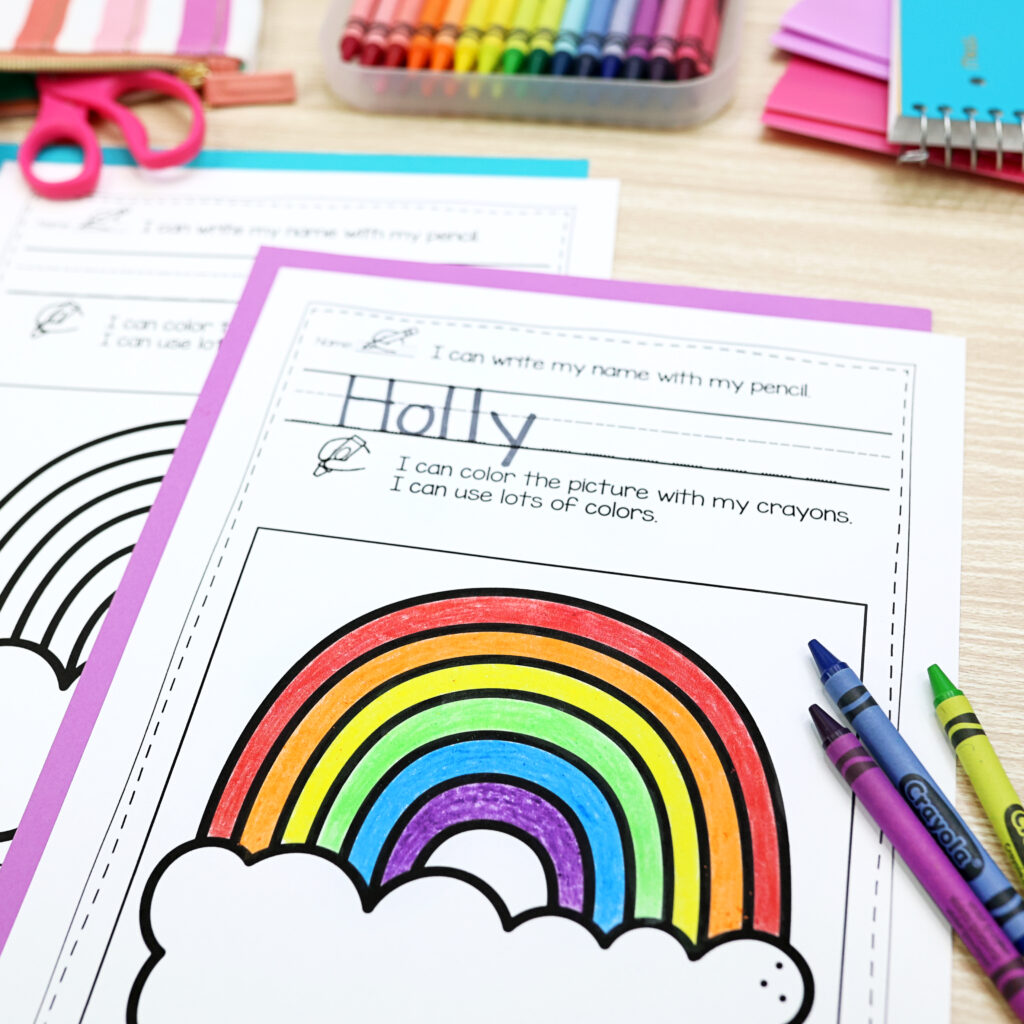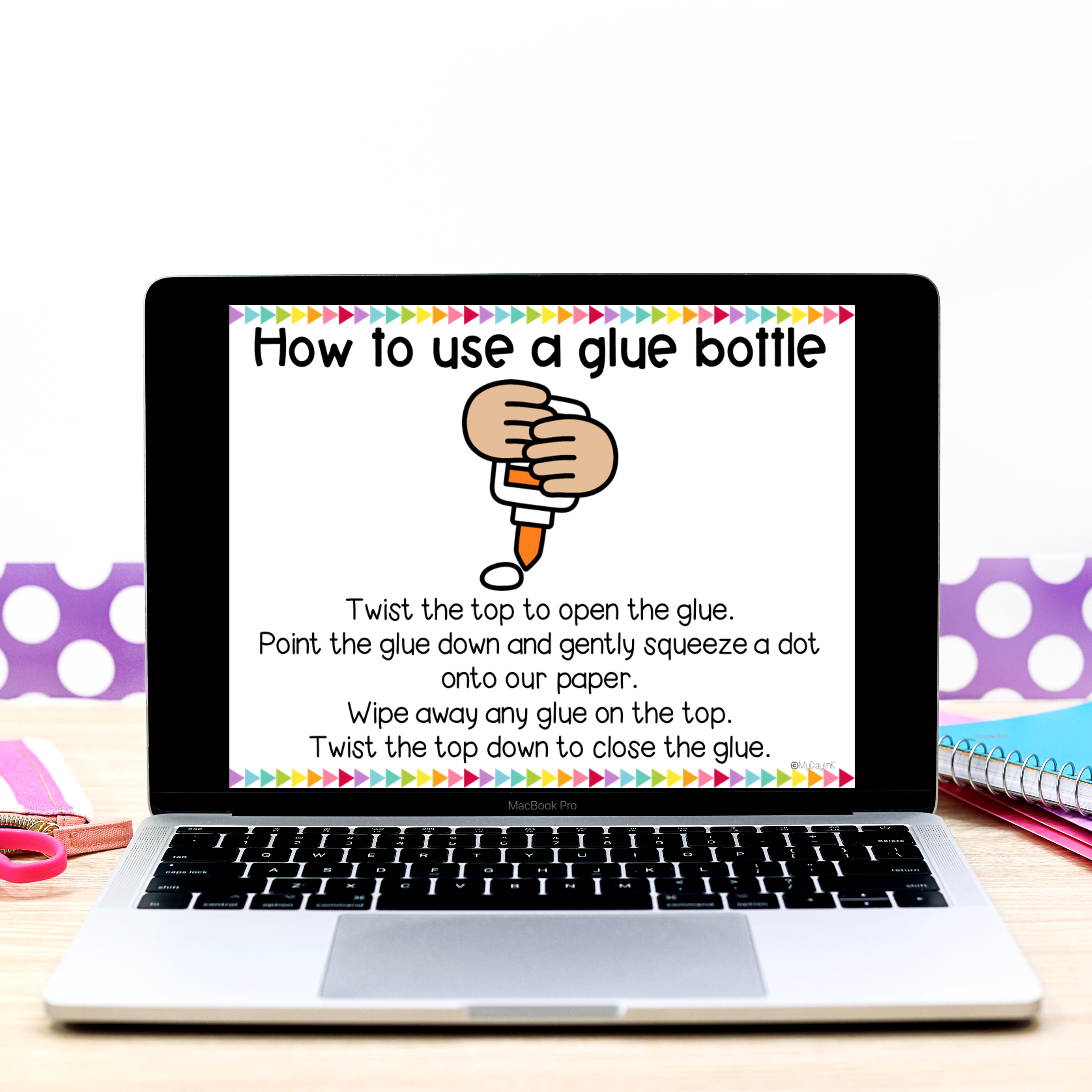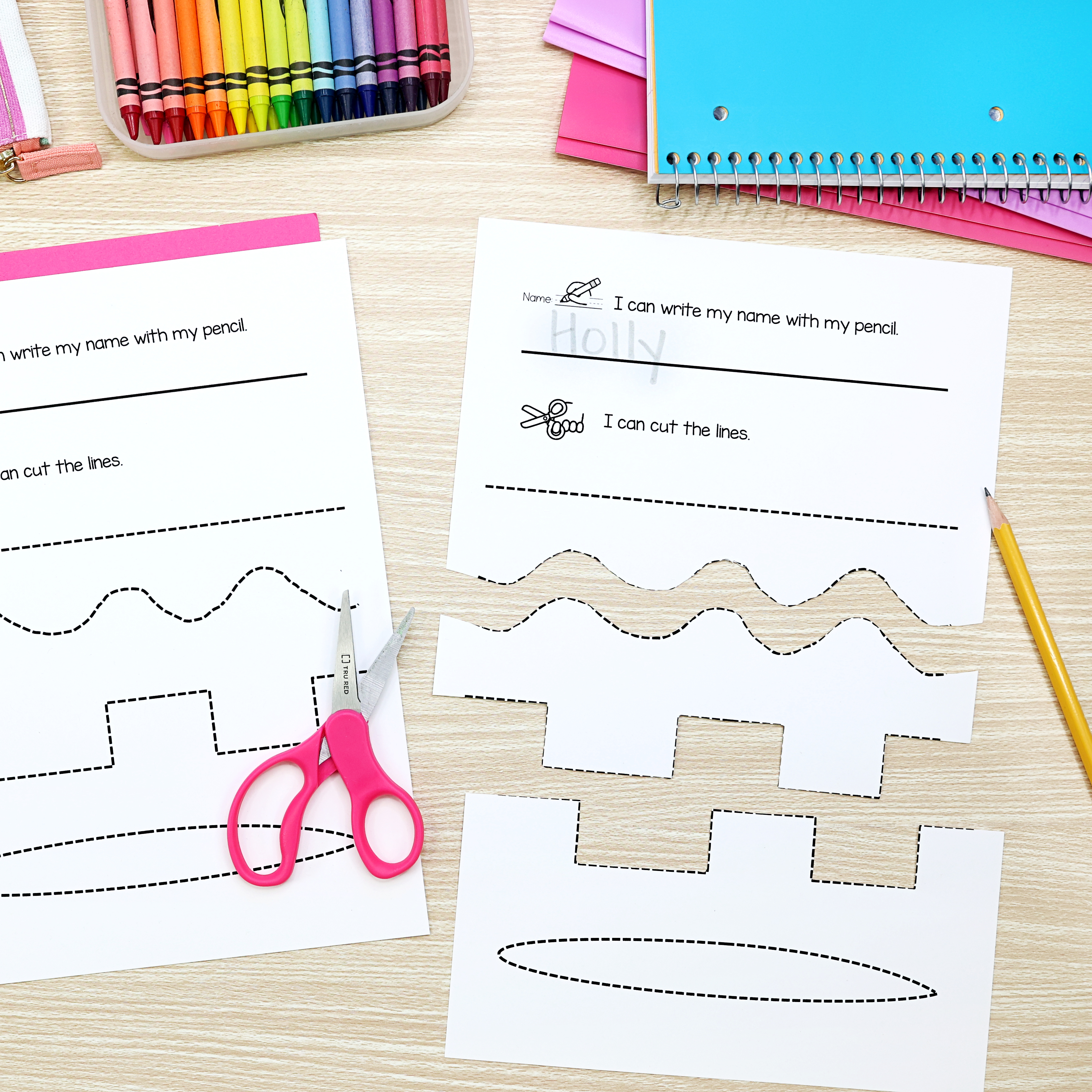3 Easy Tips For Your Kindergarten Supplies List
It seems like the school year just ended, and stores like Walmart and Target are already getting their school year displays up and ready. I love sending home my school supply list to my new kindergarteners because, many times, this is their first time purchasing things for a classroom! The first few days in a kindergarten classroom are filled with excitement and exploration. As teachers, we have the unique opportunity to lay the foundation for our young learners’ creative journey by introducing and using various supplies. We formate this great kindergarten supplies list and then quickly realize many of these children have no idea how to actually use them properly or even what they are! In this fun and informative blog post, we will discuss step-by-step examples for introducing supplies like pencils, crayons, scissors, and glue. By using the following steps 1. introduce, 2. model, and 3. practice, we can help our students become confident and responsible users of these essential tools.
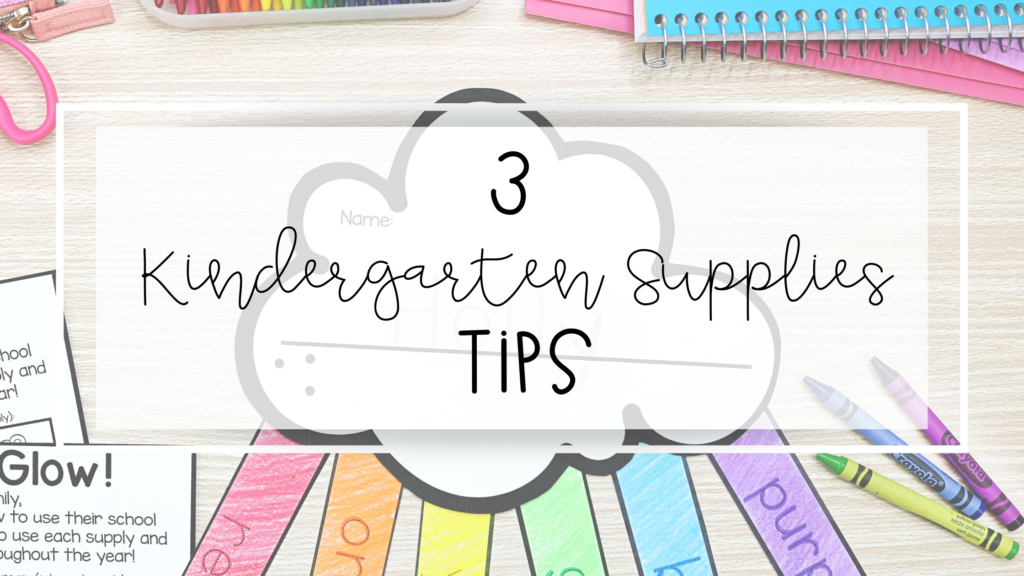
Kindergarten Supplies List
When asking for supplies or shopping for your own, there are a couple of things you want to keep in mind. Kindergarten supplies will most likely be shared with students at tables, centers, etc. So you want to keep your supply list simple and pretty interchangeable for students.
Ask for supplies like:
- Safety scissors
- Pencils
- Washable markers
- Crayons
- Glue sticks
You may also ask for more personal supplies like:
- Folders
- Notebooks
- Pencil box (if not using community supplies)
There are a lot of kindergarten must-have items. You can check out my list here. You won’t just find supplies for students on that list. You’ll find supplies needed for centers, yourself, and more. So it’s a great read if you are new to kindergarten!
Kindergarten Supplies Dos and Don’ts
As you introduce each supply, take the opportunity to talk about the Dos and Don’ts of using them. For instance, when using a pencil, emphasize carrying it with the point down, trading for a new one when needed, and not writing on the table. Encourage gentle and responsible use of supplies to ensure they last longer and can be enjoyed by everyone in the classroom. By setting clear expectations from the start, you promote a positive and respectful learning environment.
3 Tips For Your Kindergarten Supplies List
As a kindergarten teacher, I have tried to get supplies introduction down pat. But every year is different, and some classes seem to need more practice than others. I still use these three basic tips when we start to use different things off our kindergarten supplies list. Plus, using my “How To Use School Supplies” visuals has helped tremendously as well!
Tip 1: Start with the Basics
As you introduce new supplies like scissors and glue, it’s essential to start with the basics to ensure a smooth transition for your kindergarten students. For instance, provide a coloring sheet at each student’s spot as they come in and sit down. This simple activity not only gives you time to get everyone else situated but also offers a quick snapshot of what your students can do independently.
Observe their engagement in coloring. Are they using different colors and showing enthusiasm for the activity? Take note if they are following the Dos and Don’ts you discussed earlier, such as using their crayons responsibly and not writing on the table. Pay attention to how they hold the crayon or pencil and whether they are practicing proper pencil grip and control.
Additionally, check if they are demonstrating fine motor skills while coloring. Can they write their name neatly on their coloring sheet? Are they using scissors correctly, holding them with fingers inside the handles, and cutting with precision?
Observe their social interactions as well. Are they talking and interacting with their friends at their table while coloring? Encouraging peer communication during these activities fosters a positive and inclusive classroom community.
As you move on to introducing scissors and glue, provide guided practice and offer assistance when needed. Observe how your students handle scissors safely and use glue effectively without creating a mess. Encourage collaborative activities that involve cutting and gluing, allowing your students to work together and share their creative ideas.
Tip 2: Introduce with Step-by-Step
When introducing each supply, take the time to explain and demonstrate step-by-step what to do. For example, when introducing how to use a pencil, begin by modeling how to pick it up and hold it correctly. Show students how to grip the pencil with three fingers and rest it on their middle finger. Teach them how to erase gently and use their other hand to hold the paper steady while writing. After your demonstration, allow students to practice walking around to provide assistance when needed. This approach gives your students a solid foundation for using each supply, building their confidence and independence.
Once your class has become proficient with pencils and crayons, it’s time to introduce other supplies like scissors and glue. Follow a similar approach as with pencils, explaining step-by-step how to use these tools safely and effectively. Show students how to hold scissors correctly, with fingers inside the handles and the thumb pointing up. Demonstrate the proper way to cut, using slow and steady motions. When introducing glue, show them how to apply it in small dots or lines to avoid excessive mess. As always, reinforce the Dos and Don’ts, promoting responsible and respectful use of supplies.
Step 3: Allow Time for Practice
After introducing and demonstrating how to use new supplies, it’s crucial to allow ample time for practice. Providing dedicated practice sessions not only gives you the opportunity to walk around and assist any students who need help but also serves as an informal assessment of their progress with each supply.
As your students engage in hands-on practice, observe their actions closely. Are they applying what they learned during the introduction phase? Do they demonstrate confidence in their grip and usage of the supplies? Encourage open communication, and offer positive reinforcement to boost their confidence and motivation.
To reinforce their skills and ensure mastery, consider incorporating practice pages that isolate the use of each supply. For instance, if you are focusing on scissor skills, provide practice sheets with different lines to cut along, allowing them to practice turning the page with their helper’s hand. These structured practice activities help build muscle memory and fine-tune their coordination, ultimately boosting their dexterity and confidence.
Offer both individual and collaborative practice opportunities. Encourage students to work in pairs or small groups, where they can share ideas and learn from one another. Collaborative activities not only promote teamwork but also create a positive and supportive learning environment.
Allowing time for practice and incorporating structured practice pages are essential steps in ensuring your students’ mastery and confidence in using new kindergarten school supplies. As you provide opportunities for independent and collaborative practice, your kindergarten class will develop the skills and creativity needed to embark on their artistic journey with enthusiasm and skill.
